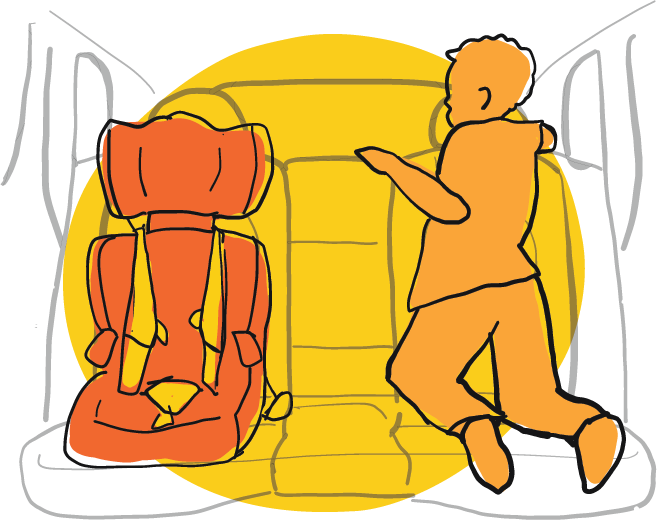Restrictive practice
General information for allied health professionals
Introduction
There's a range of vehicle restraint types and accessory products used by children and adults with disabilities, including special purpose car seats and specialty harnesses/vests, which may have features to reduce the risk of the person from getting out of their vehicle seat. These types of products can restrict a person's freedom of movement.
Australia is committed to reducing and eliminating restrictive practices and promoting the rights and inherent dignity of children and adults with disability.
There's been significant research and advancements in the design, standards and safety of seatbelts and child restraint systems used in motor vehicles. These safety measures are recognised in road laws which require all vehicle occupants to use a seatbelt or child restraint system. However, there has not been the same level of research into the specialty vehicle restraint systems and accessory products that people with disabilities and medical conditions may use when travelling in motor vehicles.
There's an urgent need for devices and products designed for the specific needs of children and adults with disabilities, particularly relating to behaviours of concern. In response, many devices and products have been developed, however many do not meet standards and have not been evaluated for safety and effectiveness. This impacts the human rights of people with disability to safe transport and has implications relating to restrictive practice.
Significant work is underway in Australia to address the gaps, which should - in the longer term - reduce and eliminate the restrictive practice implications for children and adults with disabilities when travelling in motor vehicles.

Restrictive practice defined
The NDIS Quality and Safeguards Commission [the Commission] defines restrictive practice as: any practice or intervention that has the effect of restricting the rights or freedom of movement of a person with disability.
The Commission in its Safe Transportation Practice Guide notes that:
"Regulated restrictive practices should only be used as a last resort in response to risk of harm and for the shortest time possible. There should be a clear plan to reduce and eliminate the use of regulated restrictive practices over time, where the restrictive practices are replaced with proactive and less restrictive alternatives that are based on an understanding of the person’s needs and the function of the behaviour."
Regulated restrictive practice
The Commission is responsible for the regulation and oversight of certain restrictive practices, whilst states and territories are responsible for authorising the use of regulated restrictive practices. It is important to understand state and territory requirements.
The NDIS Restrictive Practices and Behaviour Support Rules 2018 (Behaviour Support Rules) apply to all registered NDIS providers who use restrictive practices in the course of delivering NDIS supports. The rules set out conditions relating to the regulation of specified restrictive practices, including:
- seclusion
- chemical restraint
- physical restraint
- environmental restraint
- mechanical restraint.

Mechanical and environmental restraint
In some cases, restrictive practices used in motor vehicles may fall under mechanical or environmental restraint.
Mechanical restraint
The use of a device to prevent, restrict, or subdue a person’s movement for the primary purpose of influencing a person’s behaviour but does not include the use of devices for therapeutic or non-behavioural purposes.
Environmental restraint
Restricting a person's free access to all parts of their environment, including items or activities.

Devices not regulated restrictive practice
The Commission’s position, as outlined in their Safe Transportation Practice Guide considers the following are not considered regulated restrictive practice when transporting a person with disability in a motor vehicle:
- child and window locks on vehicles
- seatbelt buckle covers
- dividing screen between the driver and the back seat
- a harness prescribed for postural/therapeutic support.
The NDIS Commission’s position applies irrespective of whether or not the person is also engaging in a behaviour of concern.

The Guide clarifies that the use of a built-in harness provided with Australian standard car seats and special purpose car seats are not regulated restrictive practice.

Regulated devices
The Commission provide examples of when the use of a device or product is considered a mechanical restraint during transportation and requires reporting. This includes:
- Using a seatbelt buckle cover while the vehicle is not in transit to keep a person with disability in their seat because they are agitated.
- Using a harness on a person to manage a behaviour of concern in a vehicle who does not require it for postural/therapeutic support.
- Using a child lock when not in transit to prevent a person from exiting the vehicle when agitated.

Seeking advice
Further information and advice are available from: [email protected]
You can also visit the NDIS Quality and Safeguards Commission website or call them on 1800 035 544.




